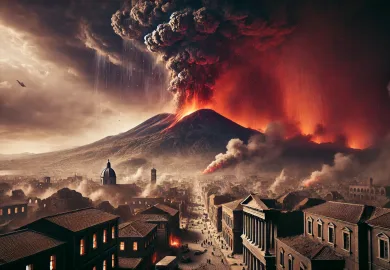
The Ancient Maya civilization, one of the most advanced and intriguing cultures of Mesoamerica, thrived from approximately 1000 B.C. until A.D. 1520. Their legacy is one of remarkable achievements in architecture, astronomy, mathematics, and writing, which continue to captivate historians, archaeologists, and enthusiasts alike. This article delves into the culture of the Maya, exploring their innovations, religious practices, and the eventual decline of their civilization, which left behind a rich tapestry of history still being unraveled today.
The Rise of the Maya: Architectural and Urban Splendor
The Maya civilization began as small agrarian communities, but by the Preclassic period (2000 B.C. – A.D. 250), these communities had grown into powerful city-states with impressive urban centers. The architectural prowess of the Maya is evident in their massive stone structures, including pyramids, palaces, and ceremonial platforms, many of which were adorned with intricate carvings and hieroglyphs.
One of the most iconic examples of Maya architecture is the Pyramid of Kukulcán at Chichén Itzá. This pyramid, with its precise alignment with astronomical events, reflects the Maya’s deep understanding of the cosmos. The stepped pyramid rises majestically, each side featuring a staircase that culminates in a temple at the top. During the equinoxes, the play of sunlight and shadow creates the illusion of a serpent slithering down the pyramid’s steps, symbolizing the descent of the feathered serpent god, Kukulcán.
Urban planning in Maya cities was also highly advanced, with cities like Tikal, Palenque, and Copán serving as political, religious, and economic hubs. These cities were characterized by their plazas, temples, and ball courts, where the Mesoamerican ballgame—a ritual sport—was played. The urban layout was carefully planned to reflect cosmological principles, further emphasizing the deep connection between the Maya’s physical environment and their spiritual beliefs.
The Maya Writing System and Mathematical Genius
The Maya civilization developed one of the most sophisticated writing systems in the pre-Columbian Americas. This system, composed of hieroglyphs, was used to record historical events, religious texts, and astronomical data. The Maya script consisted of over 800 symbols, representing sounds, words, and concepts, which were carved on stone monuments, pottery, and codices (folded bark-paper books).
Maya scribes were highly respected in their society, as they were responsible for maintaining the historical and religious knowledge of their people. The codices, of which only four are known to survive today, offer invaluable insights into Maya cosmology, rituals, and the dynastic history of their rulers. These documents, alongside the inscriptions on stelae (stone monuments), have allowed modern researchers to reconstruct much of the Maya’s history and cultural practices.
In addition to their writing system, the Maya made significant contributions to mathematics. They developed the concept of zero, an achievement not paralleled by other contemporary civilizations. The Maya numeral system was vigesimal (base-20) and used a combination of dots and bars to represent numbers. This system was crucial for their complex calendar calculations and for recording large numbers, particularly in relation to their astronomical observations.
The Spiritual and Ritual Life of the Maya
Religion permeated every aspect of Maya life, with their pantheon of gods and goddesses governing the natural world, agriculture, and celestial bodies. The Maya practiced a polytheistic religion, worshiping deities associated with the sun, moon, rain, and maize, among others. Each city-state had its own patron deities, and kings were often considered divine or semi-divine beings, acting as intermediaries between the gods and the people.
The Maya conducted elaborate rituals to honor their gods, including human sacrifice, bloodletting, and offerings of food, incense, and jade. Temples were the centers of these rituals, and the Maya built some of the most impressive religious architecture in Mesoamerica. The Temple of the Inscriptions in Palenque, for example, not only served as a place of worship but also as the tomb of the great ruler Pakal the Great.
Astronomy played a crucial role in Maya religious practices, as the movement of the stars and planets was believed to influence the gods’ behavior. The Maya developed a complex calendar system to track celestial cycles, including the Haab’ (a solar calendar of 365 days) and the Tzolk’in (a ritual calendar of 260 days). These calendars were used to determine auspicious dates for ceremonies, agricultural activities, and royal events.
The Decline and Legacy of the Maya Civilization
The decline of the Maya civilization remains one of history’s great mysteries. By A.D. 900, many of the southern cities in the Maya heartland had been abandoned, marking the end of the Classic period. The reasons for this collapse are still debated, with theories ranging from environmental degradation and drought to internal warfare and societal upheaval.
However, the Maya did not completely disappear. The Postclassic period (A.D. 900 – 1520) saw the rise of northern cities like Chichén Itzá and Mayapán, where Maya culture continued to flourish, albeit with significant changes. The arrival of the Spanish in the early 16th century brought about the final chapter in Maya history, as the conquistadors subjugated the remaining Maya city-states and imposed colonial rule.
Despite the collapse of their political structures, the legacy of the Maya endures in modern times. The descendants of the ancient Maya still inhabit parts of Mexico, Guatemala, Belize, Honduras, and El Salvador, maintaining many aspects of their ancestral culture, language, and traditions. The archaeological remains of Maya cities continue to be a source of fascination and study, offering insights into the achievements of this remarkable civilization.
The Maya’s contributions to science, art, and culture have left an indelible mark on the history of humanity. Their understanding of mathematics, astronomy, and writing set them apart as one of the most advanced civilizations of the ancient world. Today, the ruins of their cities stand as a testament to their ingenuity, while the stories carved in stone and recorded in their codices continue to reveal the depths of their knowledge and the richness of their culture.








